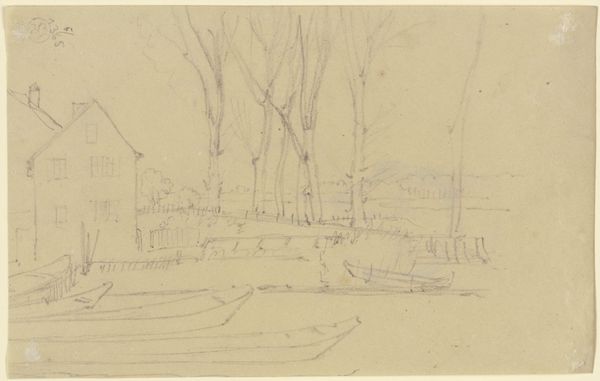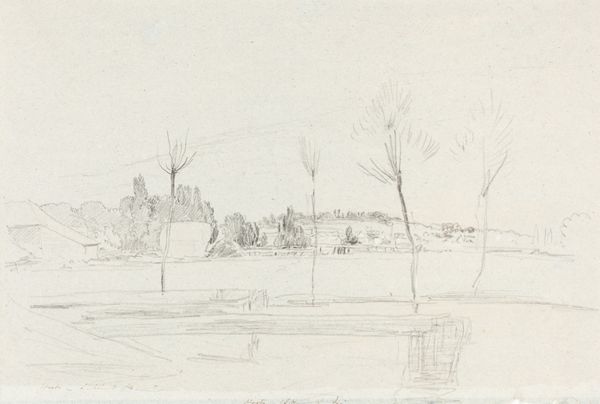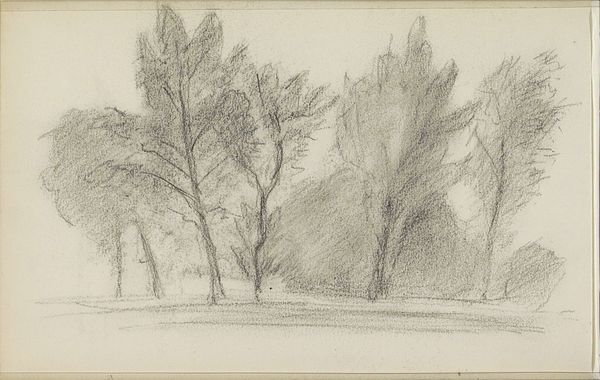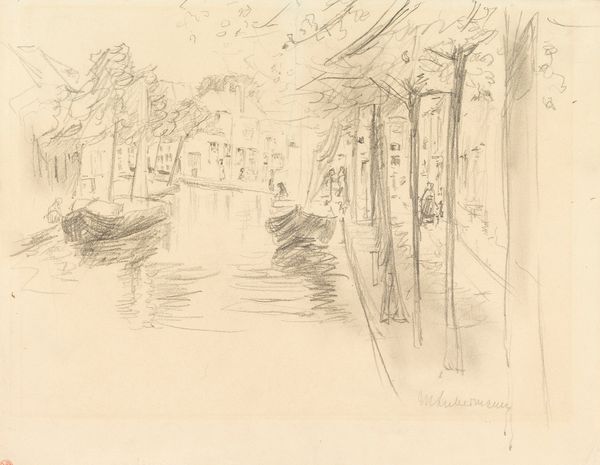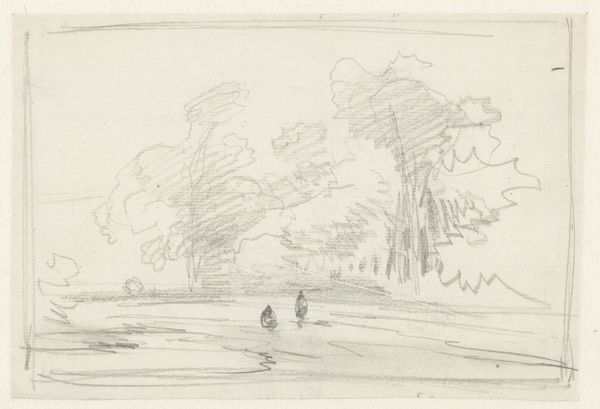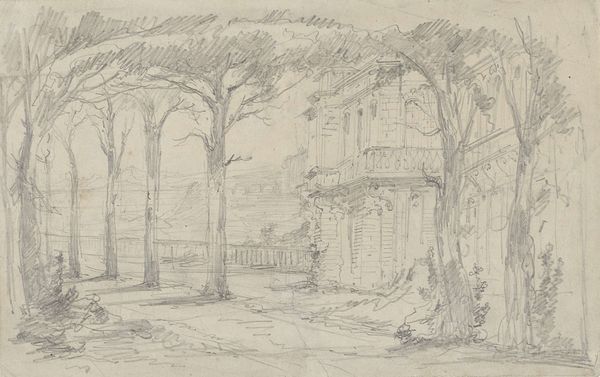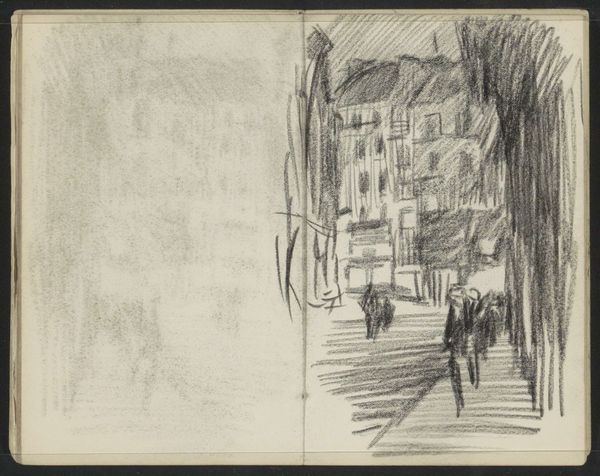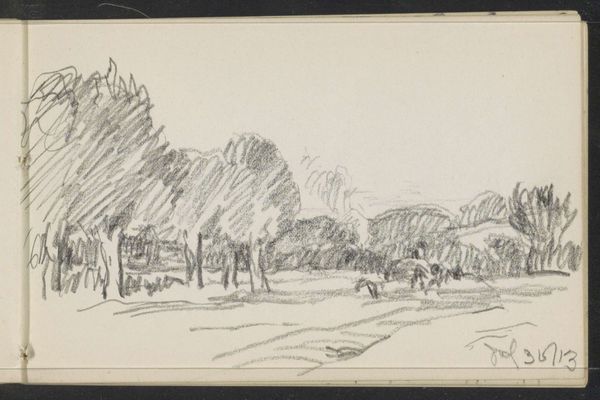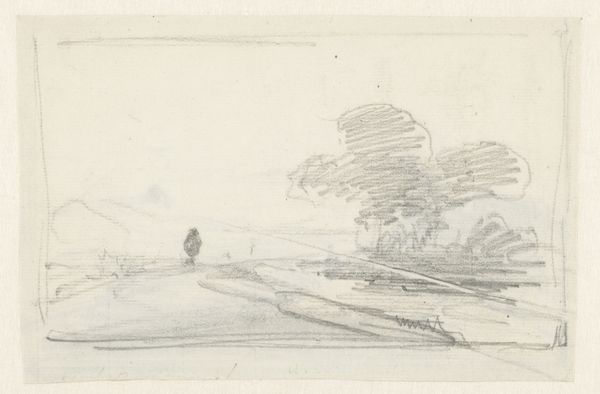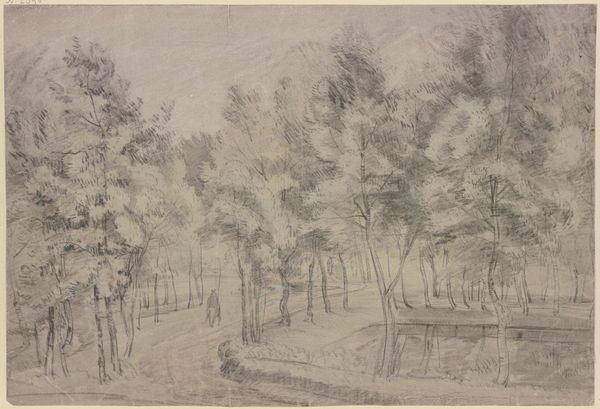
drawing, pencil
#
drawing
#
landscape
#
pencil
#
cityscape
#
realism
Dimensions: height 144 mm, width 197 mm
Copyright: Rijks Museum: Open Domain
Editor: This is "Sketch of an Alley in a City" by Andreas Schelfhout, sometime between 1797 and 1870, made with pencil as a drawing. It’s quite faint, almost dreamlike. What sort of world do you see in this drawing? Curator: What I see are echoes. Schelfhout offers us not just a cityscape, but a distillation of a shared urban memory. Consider how he uses the pencil—hatching, quick strokes. Does this mimic the fleeting nature of our experiences within a city? Editor: Definitely. There's a sense of capturing a momentary impression, not precise detail. The figures are so minimal; they could be anyone. Curator: Exactly. And look at the trees. They're looming, almost archetypal forms. What feelings do these kinds of shapes trigger? Editor: They seem like natural symbols of time and life amidst the man-made environment, maybe a bit romantic? Curator: Precisely! And I would say that feeling is important for this. By stripping the city to its barest elements, he invites the viewer to project their own understanding. Is that public building, or simple houses. How does the open composition contribute to the feeling or memory or feeling of potential and possibility within the frame? Editor: It’s like the alley extends far beyond the page, offering endless opportunities to walk anywhere! Curator: It also suggests continuation. A connection with other symbols or experiences. Perhaps for Schelfhout, art served to awaken a deep current of collective remembering within himself and viewers alike. Editor: I see now. It's more than just a cityscape, it's about the impression and the associations that go with that. It's a mental map or personal recollection of urbanity in pencil form. Curator: Indeed. Schelfhout masterfully employed the simplest of means to evoke the richest of communal meanings, memories, and potentials that remain embedded with art as visual memory.
Comments
No comments
Be the first to comment and join the conversation on the ultimate creative platform.
